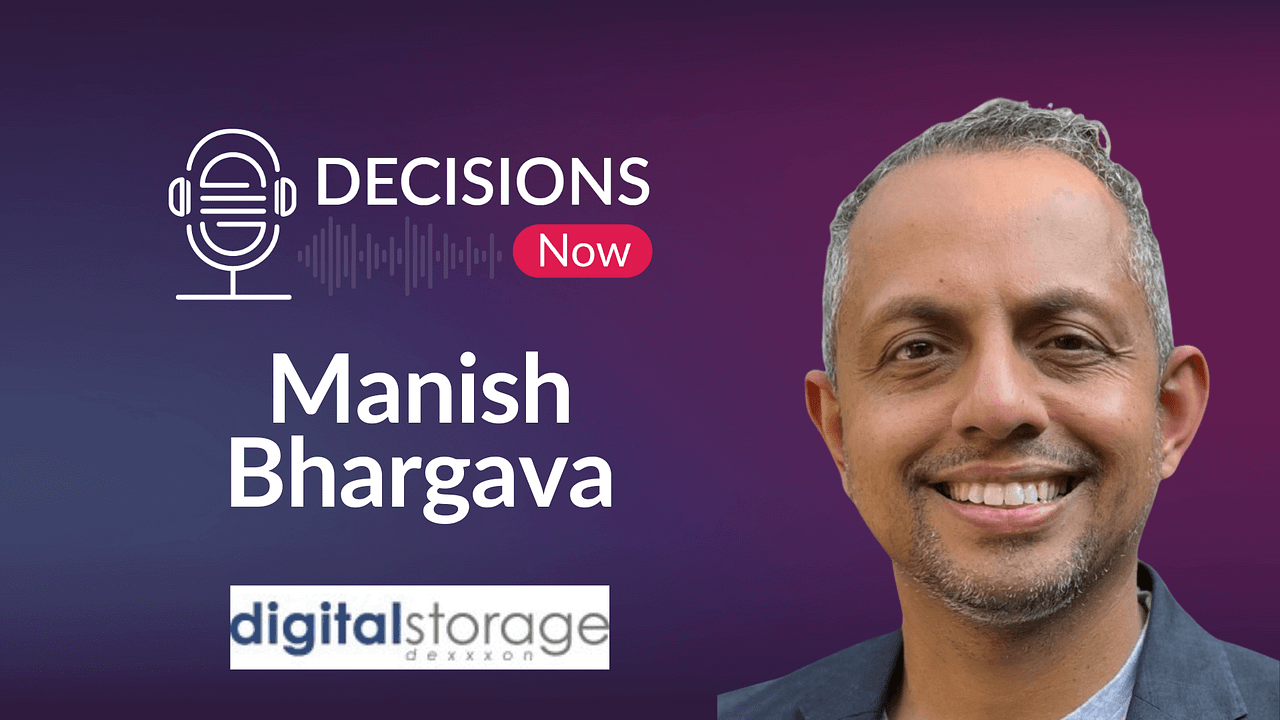The combined power of artificial intelligence (AI) and data is transforming industries. From collecting data to optimizing it and making decisions, many steps go into the process from the beginning to the end. In this episode of the Decisions Now podcast, we talked with our very special guest, Marc Vollenweider, co-founder and director of Evalueserve on what managing data and using AI-powered tools looks like.
Co-hosts Rigvinath Chevala, EVS chief technology officer and Erin Pearson, EVS director GTM (go to market), chat with Vollenweider to learn about the factors that play into successful data-driven decision-making for most businesses.
Subscribe to the Decisions Now podcast today, you can find us on Spotify, Apple Podcasts, and Amazon Music among other platforms.
Processing the vast amount of the data out there is beyond the realms of our brain power, AI helps bridge this challenge but beyond that, how does one ensure that all components of this process are working well together? This compelling conversation dives into the different focus areas that industry leaders should pay attention to, when using AI-powered tools and data to gain insights.
Data Delivery
The When, Why and How?
“Now how do you get the insight to the right person?” Vollenweider asks. “That’s another very tricky piece of work because everybody works differently, everybody wants to have the story presented to them in different ways, some people want it at 7:30 in the morning before they even go to the office.”
It’s essential to get data to decision-makers at the right time and in the right format.
“Some people want a quick statement, the quick message, maybe on WhatsApp or whatever, maybe with a link to touch if they’re interested in doing some more, other people want this to be spelled out to them in text, and some other people just want the hard facts, the data, and they’re happy with it,” Vollenweider said. “So, understanding the end user is critical in this.”
Data analytics teams need to know their end-user well and deliver data to them in that manner, that benefits them the most. While some see obvious patterns in tables of information presented to them, some want short concise conclusions or insights, while others simply prefer data presented through compelling storytelling.
When receiving large amounts of financial information from the finance department with little time to study it, Vollenweider says he prefers the information be concise, include a deviation analysis, and information that’s decision-ready to then be executed into action, he mentioned.
Vollenweider divides this process into four levels, one being pure raw data, level two is converting that data into information, three turning that into insights and finally a bunch of insights together then transform into knowledge at the fourth level.
Minimalist Data
“A B2C example in this case, a client of ours, a logistics company with over 200 service centers U.S. needed insights on the kind of service volume they could expect at any day and time, and they needed it about 14-days in advance,” he said. “The client is busy and doesn’t have much time to read the report, so we needed to push analytics and ask what’s the minimal data they need to have and maximum data they can handle?”
Another important factor to consider in this data analytics business is knowing when to deliver important data in a digestible, minimalist fashion.

The Data Team
Making decisions for your business can be tricky, decision-makers want to protect their investments, and successfully deliver on projects. For many it’s a game of numbers, or data, and for some instinct. While most people rightfully rely on mathematics-backed science to make decisions, an ideal data analytics team should comprise more than data scientists and analysts.
A key addition to traditional analytics teams would be data architects and behavioral scientists, Vollenweider added.
A well-rounded data analytics team can rely on hard facts and deliver it with instinctual backing to the end user. However, both types of people, data nerds or instinctual decision-makers need to find a balance in the middle where they can rely on data-driven insights as well human experience, Vollenweider added.
Knowing the Drawbacks of AI
It’s important for companies to not overly rely on or become too comfortable with their decision-making tools.
“In some cases when a machine doesn’t understand the context that it has been built for, when in all likelihood, then the conclusions from an engine are going to be wrong,” Vollenweider advised. “So therefore, a leader needs to understand where the limitations are off the analytics.”
As time and circumstances and contexts change, it’s important to turn the algorithm and update it with the relevant context for accurate insights, and this is where human knowledge and experience become important, Chevala said.
While data analytics and AI are essential to your business’s growth, it’s just as important to know if you’re using those assets correctly, listen to this episode of the Decisions Now podcast today for more insights on the topic by Marc Vollenweider.


